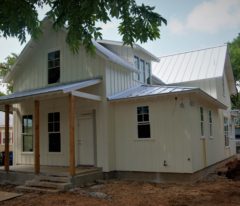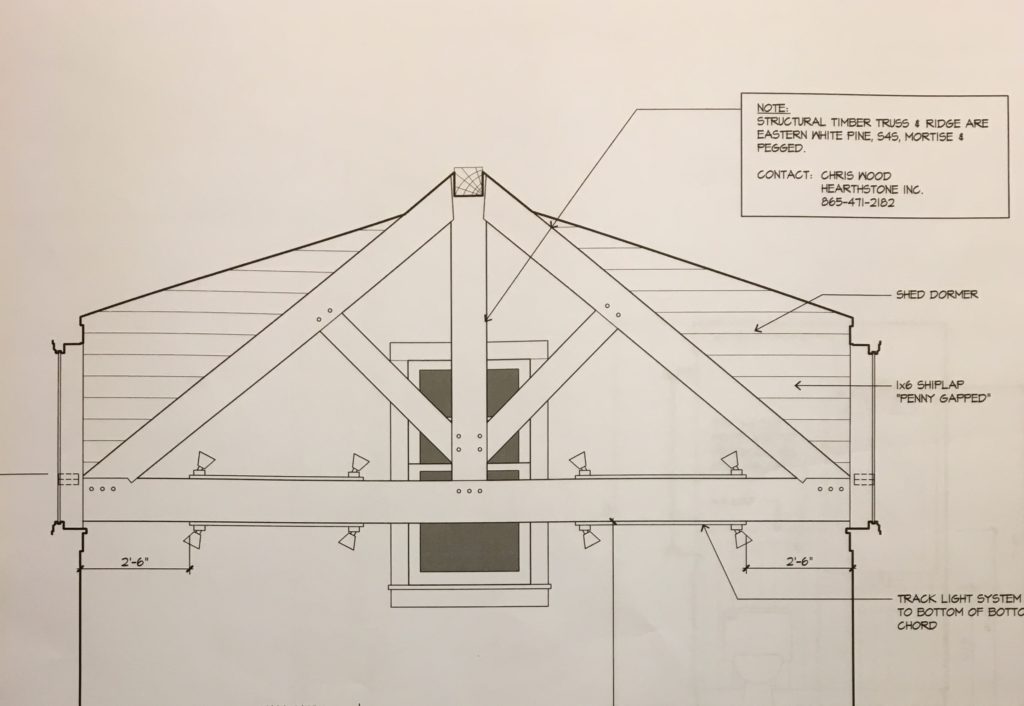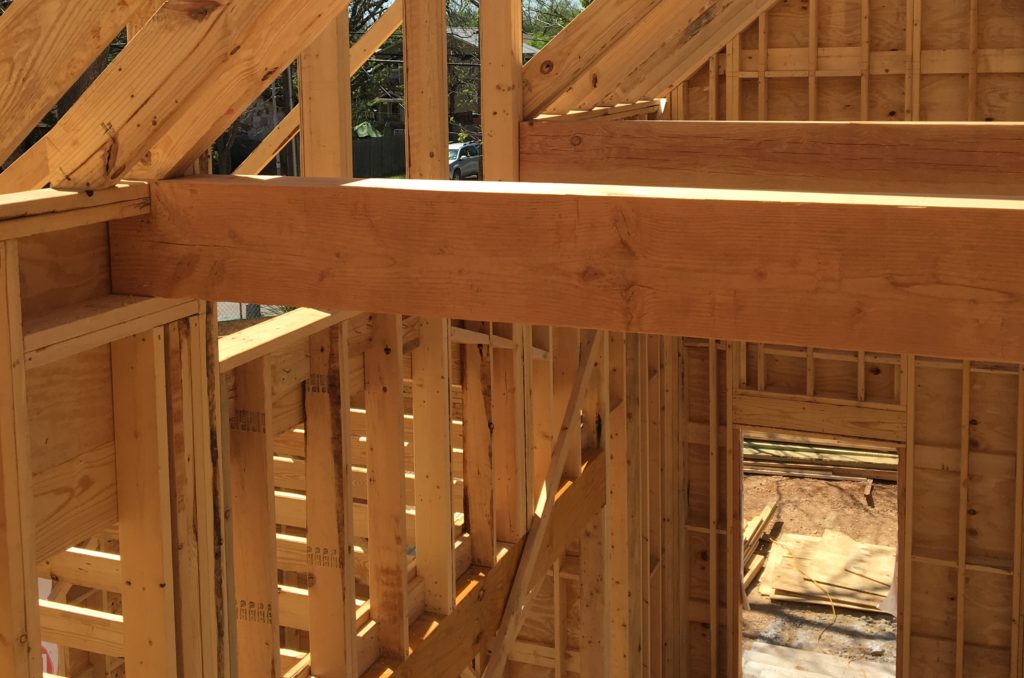Here is a cautionary note, if you are building a two story house. Plan ahead for the location of the A/C heating duct work, in the framing for the second floor.
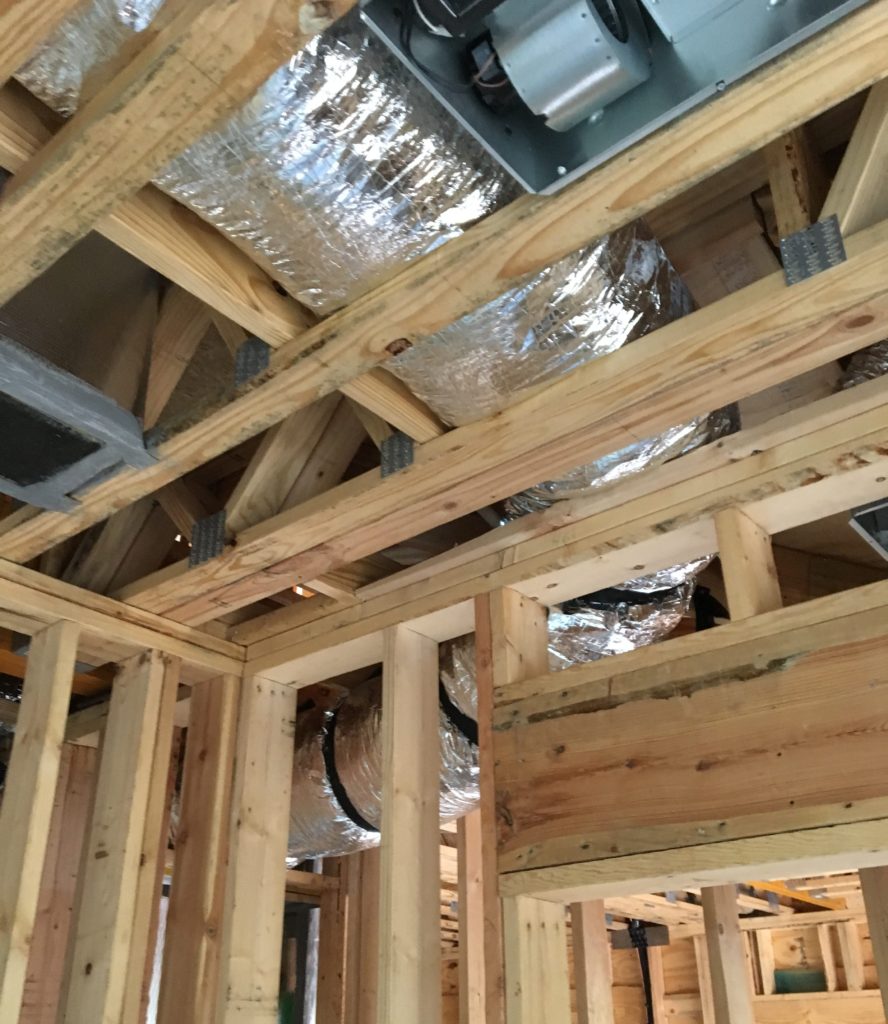
In our case, the duct work details were not part of the architect’s plans, and it seems the normal process is to work the details out after framing is complete. That works if you have a house with a large attic, but here we had only about 18 inches of space in the joists to run first floor duct work. That led to some changes and compromises in our final layout.
Here’s the story. We planned to put the downstairs air handler in a closet in the garage, since we ran out of interior space in the house. While it struck me, the owner, as a strange location, it was the best to maximize the interior space in the house. But, after framing the house, we had a walk through with the A/C subcontractor, and he immediately made it clear that the garage location was a non-starter. It would not provide needed access to return air and the duct work exiting the plenum did not work with the framing. So, we lost a hall closet, and had to encroach about a foot into the master shower for the air handler.
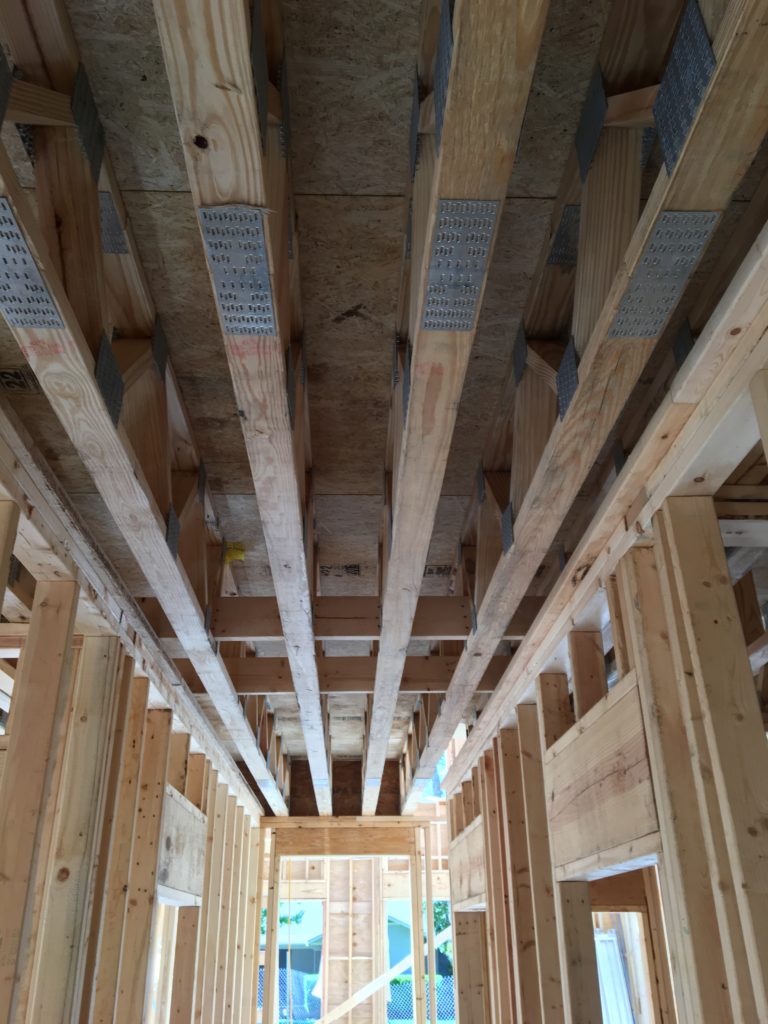
But, a bigger concern was where to locate the duct work to serve the first floor rooms? Obviously, the duct work needed to run in or under the second floor joists. But, as you can see from this picture the joists are so tightly spaced there was not room for the main duct between them. Lowering the hall ceiling was aesthetically not an option. We debated demoing/moving one joist, to create extra space, but that posed structural and cost issues. We also have a triple glulam beam that runs the length of the house, and presented a barrier to duct work crossing from one side to the other.
Ultimately, our builder found a nice solution.

The main duct would cross under the glulam triple in the master shower, and we would lower the shower ceiling about 15 inches. We also lost about 12 inches in the ceiling of the master closet, where another run of duct work crossed under the triple, the orange beam shown in this picture. This fix was much better than exposed duct work, or lowering the ceiling in the main hallway. But, the take-away is to plan ahead, especially for the major mechanical features of a new home.
